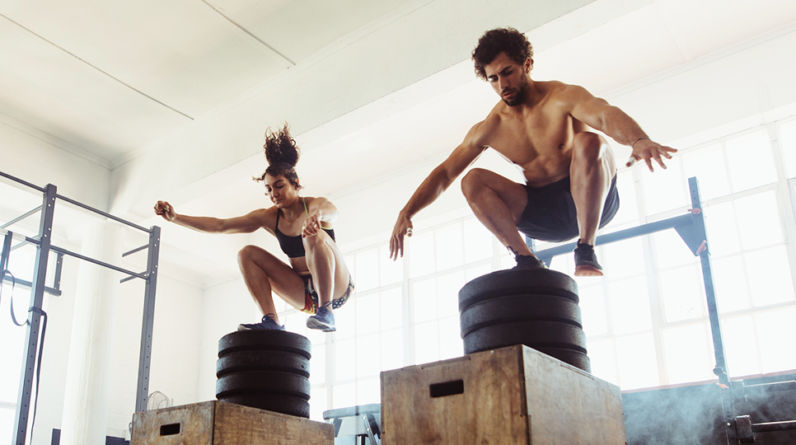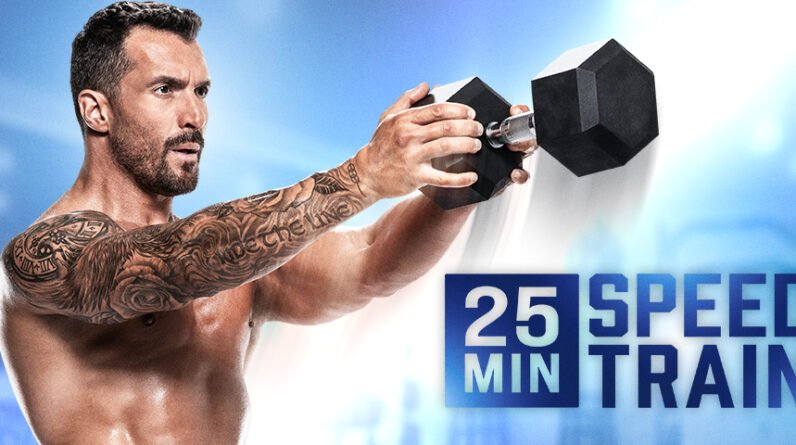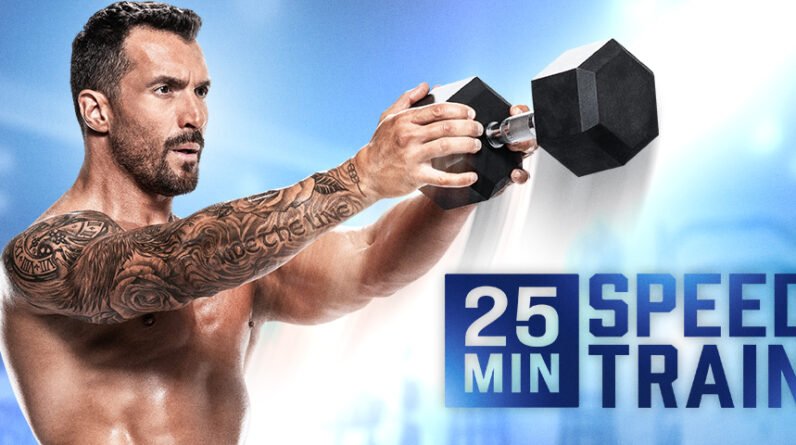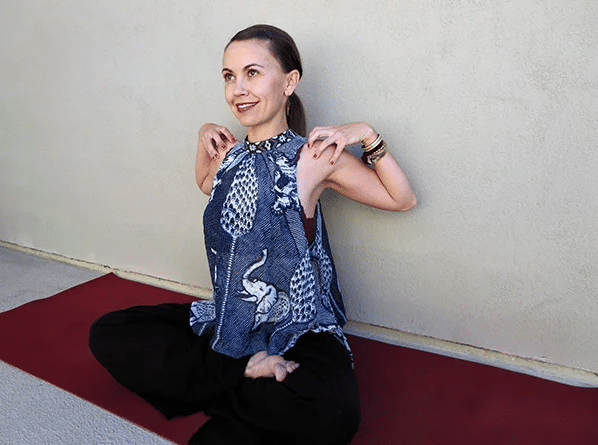
Jumping (and learning how to jump higher) isn’t a skill reserved only for pro basketball players or high jumpers. Jumping, just like running, squatting, skipping, and throwing, is a fundamental human movement, explains Jack Coxall, CSCS.
“Being able to jump — and jump correctly — is not only a great skill to have in the bag, but it has so many carryovers to other things,” Coxall says. “This includes power development and strength development, both of which decrease with age; absorption of force, which is related to injury prevention; coordination; and increased bone density.”
In other words, time spent learning how to jump higher is time well spent.
10 Exercises to Help You Jump Higher
“Jumping is clearly a lower-body dominant exercise,” Coxall explains. “It requires the ability of your quadriceps, hamstrings, glutes, gastrocnemius, and soleus to produce force to get you into the air. However, jumping isn’t limited to this. Your core plays a vital role in order to keep you stable on take-off and landing. The musculature of your arms is required for balance.”
Training to jump high should include movements that build strength, like deadlifts and squats, as well as plyometric moves, like tuck-ups and box jumps. “Improving power for one exercise isn’t limited to just doing that exercise; other power movements like slams, throws, and other types of jumps will all help your vertical jump,” Coxall says.
Ready to jump higher? Try incorporating some of the following exercises into your workout routine.
1. Tuck-ups
- Stand with your feet hip-width apart and lift your fully extended arms, palms down, to chest height.
- Bend your knees into a quarter squat and, exploding off the balls of your feet, jump straight up in the air.
- As you jump, pull your knees up toward your chest. Try to touch your knees to your palms.
- Land softly with your feet hip-width apart and your knees slightly bent.
2. Frog jumps
- Stand with your feet slightly wider than shoulder-distance apart, feet turned out.
- Keeping your chest up and your lower back flat, push your hips back to squat down as low as possible, touching the floor between your feet with your fingertips if you can.
- Swing your arms forward and up as you jump as high as possible.
- Land softly, and immediately drop back down into a squat to begin your next rep.
3. Alternating step jumps
- Stand tall with your arms by your sides and your left foot on a bench so that your hip, knee, and ankle are all bent 90 degrees.
- Keeping your chest up, shoulders back, and core braced, drive through your left foot while swinging your arms up and pushing your body up with enough force for the left foot to leave the bench.
- Switch feet in the air, landing with your right foot on the bench and your left foot on the floor. Continue alternating legs with each rep.
4. Holmsen screamer lunges
- Step back into a reverse lunge with your right leg, toes pointed forward, left foot flat, ball of your right foot on the floor. Your right arm should be forward and your left arm back. This is the starting position.
- Drive your right knee up and forward explosively, jumping into the air as high as possible while keeping your left leg straight and switching the position of your arms, so that your left arm is now forward.
- Land softly on your left leg and return to the starting position.
- Do equal reps on both sides.
5. Box jumps
- Stand facing a box or other stable, elevated surface with your feet hip-width apart. Bend your knees into a quarter squat, bringing both arms behind you.
- Swing your arms forward and jump up and onto the box, landing with your knees bent and both feet flat on the box.
- Stand up, then step down from the box one foot at a time.
6. Weighted jump squats
- Holding a dumbbell with both hands in front of your chest, stand tall with your feet shoulder-width apart.
- Keeping your chest up and core braced, push your hips back, and lower your body until your thighs are parallel to the floor.
- Rise back up explosively, jumping straight up.
- Land softly and with bent knees, avoiding landing on flat feet, then immediately lower yourself into your next rep.
7. Dumbbell squats
- Stand with your feet hip to shoulder-width apart, holding a pair of dumbbells at arm’s length by your sides.
- Keeping your back flat and core braced, push your hips back, bend your knees, and lower your body until your thighs are parallel to the floor.
- Pause, then push yourself back up to the starting position.
8. Dumbbell push presses
- Stand tall with your feet hip- to shoulder-width apart holding a pair of dumbbells by your shoulders, palms in and elbows tucked in close to your body.
- Keeping your back flat and core braced, push your hips back and bend your knees, lowering yourself into a quarter-squat.
- Push up explosively with your legs as you press the weights directly above your shoulders. Keep your biceps close to your ears.
- Lower the weights back to the starting position, and repeat.
9. Romanian deadlifts
- Stand with your feet shoulder-width apart and parallel, holding a pair of dumbbells in front of your thighs, palms facing you.
- Draw your shoulders back, unlock your knees and engage your core as you slowly hinge at your hips, sending your butt back to the wall behind you.
- Maintaining your lower back’s natural arch, lower the weights until your torso is nearly parallel to the floor. Keep your head neutral and the weights close to your body throughout the movement.
- When you can’t descend further without rounding your back (you should feel a deep stretch in your hamstrings), pause, squeeze your glutes at the top, then push your hips forward to return to the starting position.
10. Wall ball exercise
- Stand about two feet away from a wall with your feet hip-width apart. Keep the wall ball between your hands at chest height. Squeeze your elbows into your sides.
- Sink into a squat while maintaining a neutral arch in your spine. Keep the ball close to your chest on the way down.
- Keeping your chest up, push your body away from the floor and throw the ball at the wall above your head, aiming for a spot about 8 feet off the ground.
- Catch the ball following contact with the wall and sink back into your next squat.
- Repeat the exercise.
Other Tips to Improve Athletic Performance
While a higher vertical jump translates to other health and fitness-related benefits, it’s just one piece of the puzzle. If you want to improve your overall athletic performance, it’s important to approach training with a holistic perspective.
1. Pay attention to how you eat
Most people know to skip junk in favor of healthy foods, but nutrient timing is also important. After a workout, aim to consume 20 to 30 grams of protein within a couple of hours of exercising to help your body repair and rebuild muscle tissue.
2. Prioritize sleep
Adequate sleep (between seven and nine hours for adults) is crucial to everyone’s physical and mental health, but it can be a literal game-changer for athletes. The National Hockey League, Major League Baseball, and the National Basketball Association have all instituted policy changes that afford players more time for rest and recovery between games.
3. Stretch and mobilize
As if you needed another reason to work on your mobility, there’s some evidence that stretching — dynamic stretching, specifically — may improve vertical jump performance. So, get in those leg swings!







